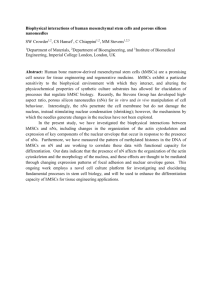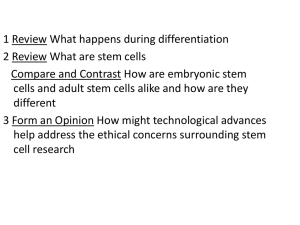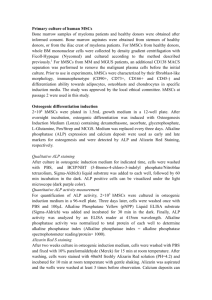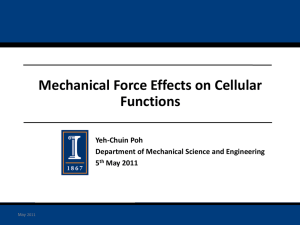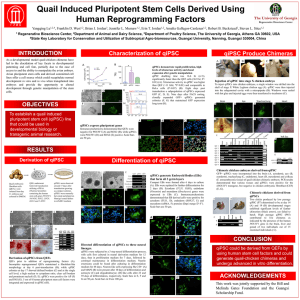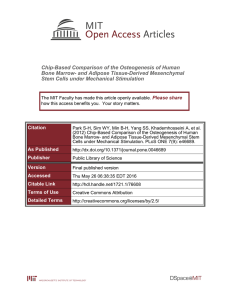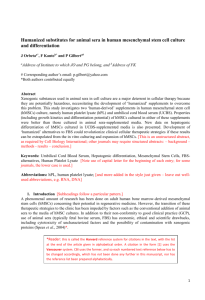2013/05/27 101學年度教師教學與研究交流分享會:醫學系 講者:醫學
advertisement
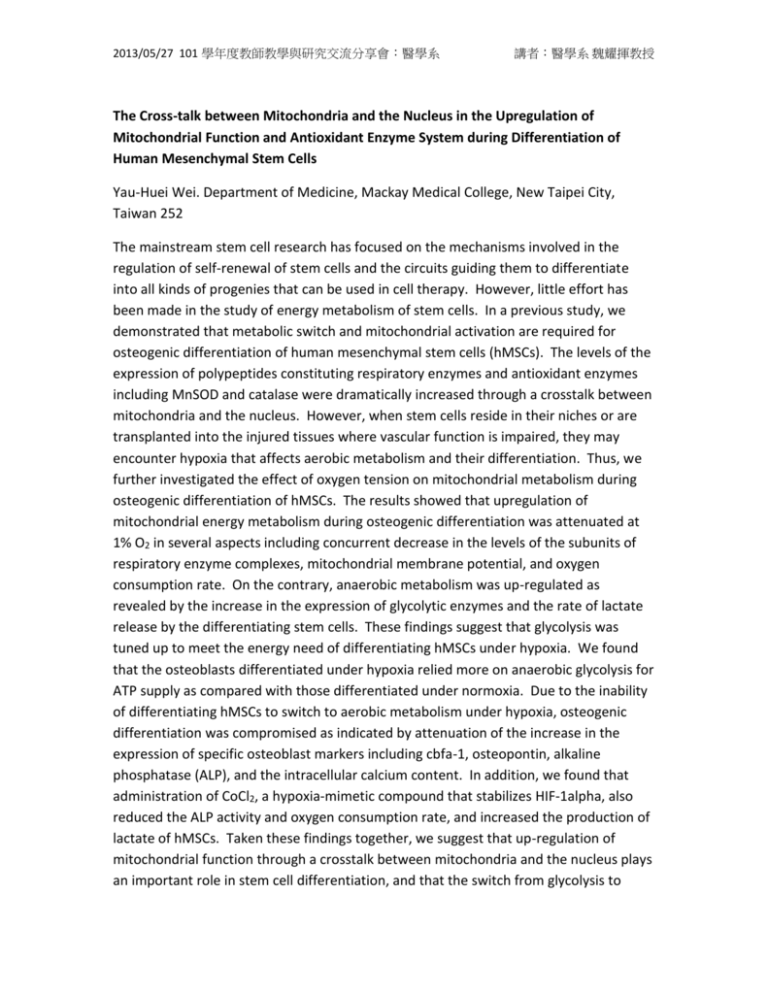
2013/05/27 101 學年度教師教學與研究交流分享會:醫學系 講者:醫學系 魏耀揮教授 The Cross-talk between Mitochondria and the Nucleus in the Upregulation of Mitochondrial Function and Antioxidant Enzyme System during Differentiation of Human Mesenchymal Stem Cells Yau-Huei Wei. Department of Medicine, Mackay Medical College, New Taipei City, Taiwan 252 The mainstream stem cell research has focused on the mechanisms involved in the regulation of self-renewal of stem cells and the circuits guiding them to differentiate into all kinds of progenies that can be used in cell therapy. However, little effort has been made in the study of energy metabolism of stem cells. In a previous study, we demonstrated that metabolic switch and mitochondrial activation are required for osteogenic differentiation of human mesenchymal stem cells (hMSCs). The levels of the expression of polypeptides constituting respiratory enzymes and antioxidant enzymes including MnSOD and catalase were dramatically increased through a crosstalk between mitochondria and the nucleus. However, when stem cells reside in their niches or are transplanted into the injured tissues where vascular function is impaired, they may encounter hypoxia that affects aerobic metabolism and their differentiation. Thus, we further investigated the effect of oxygen tension on mitochondrial metabolism during osteogenic differentiation of hMSCs. The results showed that upregulation of mitochondrial energy metabolism during osteogenic differentiation was attenuated at 1% O2 in several aspects including concurrent decrease in the levels of the subunits of respiratory enzyme complexes, mitochondrial membrane potential, and oxygen consumption rate. On the contrary, anaerobic metabolism was up-regulated as revealed by the increase in the expression of glycolytic enzymes and the rate of lactate release by the differentiating stem cells. These findings suggest that glycolysis was tuned up to meet the energy need of differentiating hMSCs under hypoxia. We found that the osteoblasts differentiated under hypoxia relied more on anaerobic glycolysis for ATP supply as compared with those differentiated under normoxia. Due to the inability of differentiating hMSCs to switch to aerobic metabolism under hypoxia, osteogenic differentiation was compromised as indicated by attenuation of the increase in the expression of specific osteoblast markers including cbfa-1, osteopontin, alkaline phosphatase (ALP), and the intracellular calcium content. In addition, we found that administration of CoCl2, a hypoxia-mimetic compound that stabilizes HIF-1alpha, also reduced the ALP activity and oxygen consumption rate, and increased the production of lactate of hMSCs. Taken these findings together, we suggest that up-regulation of mitochondrial function through a crosstalk between mitochondria and the nucleus plays an important role in stem cell differentiation, and that the switch from glycolysis to 2013/05/27 101 學年度教師教學與研究交流分享會:醫學系 講者:醫學系 魏耀揮教授 aerobic metabolism is attenuated and osteogenic differentiation of hMSCs is compromised under hypoxia. 中文題目:人類間葉幹細胞分化過程中調控粒線體功能及抗氧化酵素 系統之粒線體和細胞核間的對話
